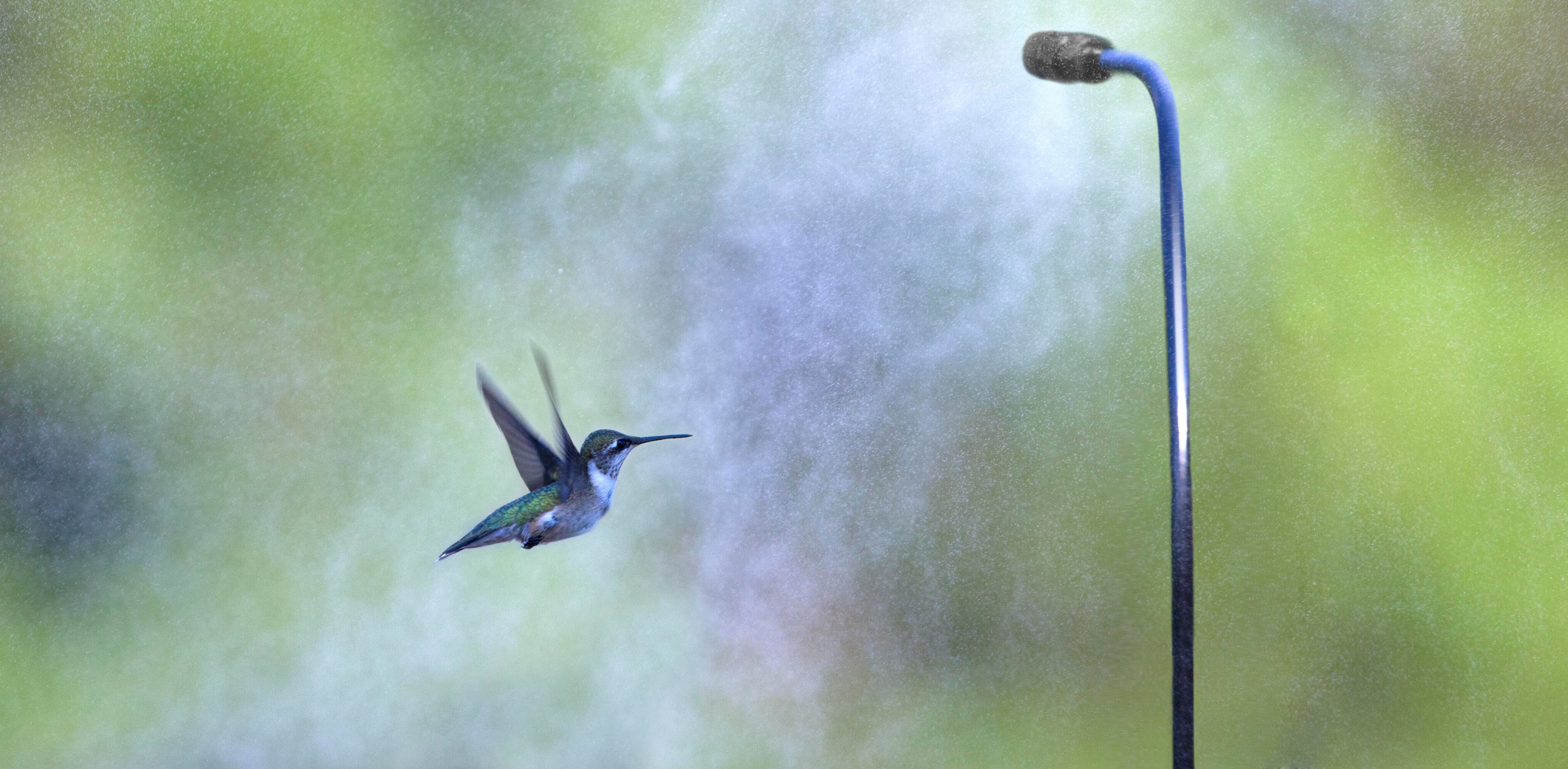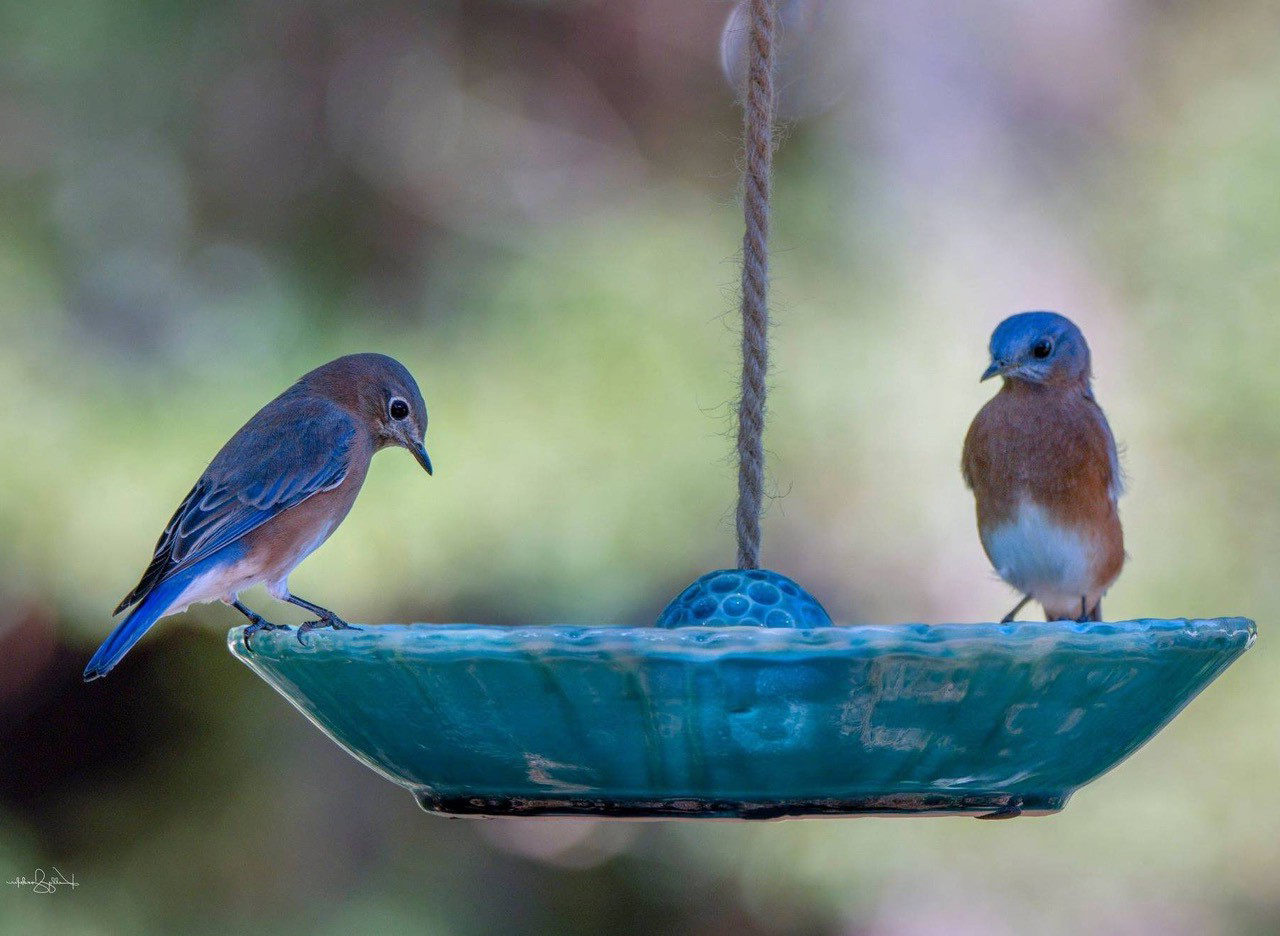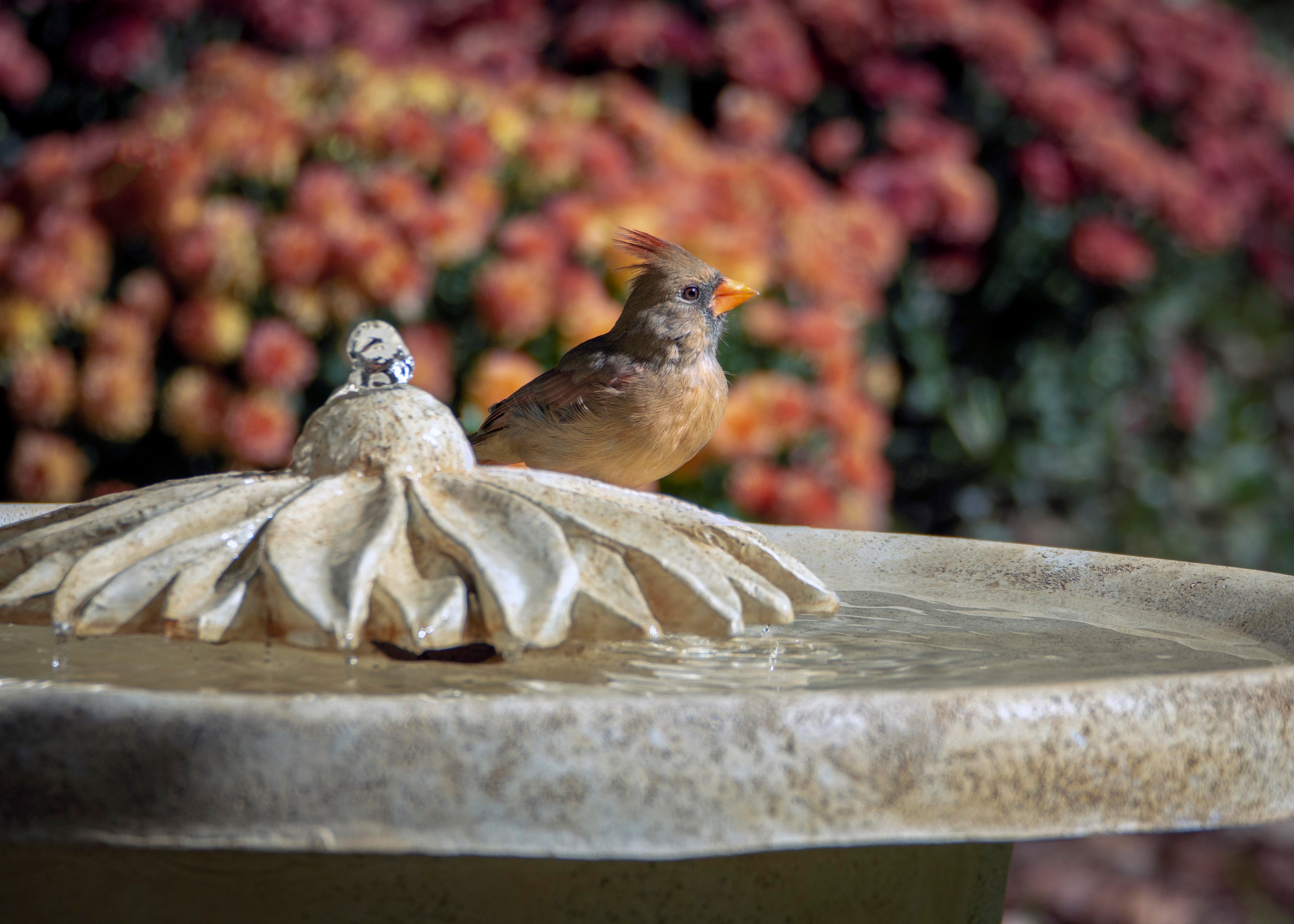-
A Message from Audubon
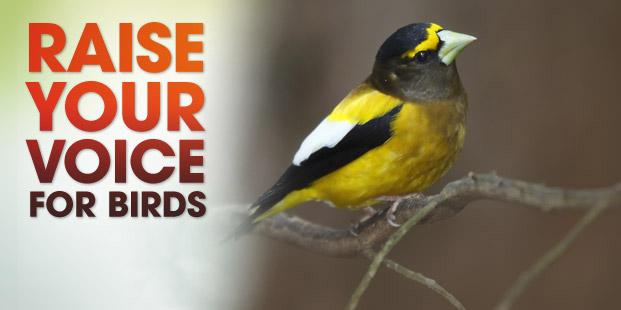 Could we be facing a future without some of our most beloved feathered friends?
Could we be facing a future without some of our most beloved feathered friends?Many of America’s most iconic and familiar bird species are declining in numbers. They are victims of growing list of threats, including disruption in our climate, conversion of pastures and
meadows to farmland, urban sprawl, pollution, logging, and other factors.Audubon has identified more than 20 birds, once abundant, whose numbers are now plummeting. Our birds are sounding a warning; for the threats to these birds are threats to the ecosystems upon which all life depends, including our own. The challenges are many, and so the solutions will be many as well. But all solutions begin with knowledge. So we ask you to support the National Audubon Society and share this with a friend or two.
Audubon’s unprecedented analysis of forty years of citizen-science bird population data from our own Christmas Bird Count plus the Breeding Bird Survey reveals alarming declines for many of our most common and beloved birds.
Since 1967 the average population of the common birds in steepest decline has fallen by 68 percent; some individual species nose-dived as much as 80 percent. All 20 birds on the national Common Birds in Decline list lost at least half their populations in just four decades.
The findings point to growing impact from the many environmental challenges our birds face, from habitat loss from development, deforestration, and conversion of land to agriculture, to climate change. Only citizen action can make a difference for the birds and the state of our future.
Which Species? Why?
The wide variety of birds affected is reason for concern. Populations of meadowlarks and other grassland birds are diving because of suburban sprawl, industrial development, and the intensification of farming over the past 50 years.
Greater Scaup and other tundra-breeding birds are succumbing to dramatic changes to their breeding habitat as the permafrost melts earlier and more temperate predators move north in a likely response to global warming. Boreal forest birds like the Boreal Chickadee face deforestation from increased insect outbreaks and fire, as well as excessive logging, drilling, and mining.
One thing these common species all share is the grim potential to become uncommon – unless we all take action to protect them and their habitat. Browse the species and learn what you can do to help.
-
fighting at wild bird feeders
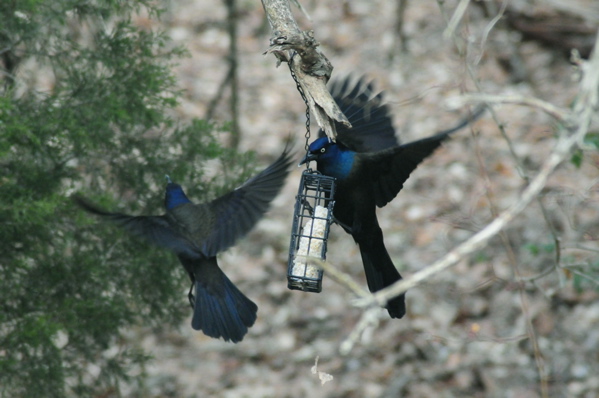 Some feeders are more popular than others, as are some of the bird treats offered to feathered friends. Outrage and feeding frenzies can be expected from some species, while others like Goldfinches, would rather give up & fly away than fight for a spot at at wild bird feeders.
Some feeders are more popular than others, as are some of the bird treats offered to feathered friends. Outrage and feeding frenzies can be expected from some species, while others like Goldfinches, would rather give up & fly away than fight for a spot at at wild bird feeders.These grackles are doing battle over tempting suet at this feeder. A great photo, their iridescent color is superb. Certainly not one of my favorite birds, but again a cool photo.
They are so darn smart too! If I sit outside on the deck, the Grackles will circle the perimeter of the yard, hide in the canopy and just wait to swoop down on feeders…and at my split-second departure. Upon my return, just as soon as the screen door opens… off they go. They actually sit and watch me, waiting for me to leave so they can raid the wild bird feeders. Their favorites have got to be the live meal worms (meant for the Bluebirds), Suet and Woodpecker Mix. I’ll admit it is quite the smorgasboard in our yard, and getting the good birds will inevitably attract some not-so-desirable ones too.

Speaking of wild bird feeders, have you ever seen Hilda? She’s a cool stoneware feeder that the birds just love. Filled with sunflower seed, she attracts all kinds, and the innovative design deters larger birds with its small perch. In several fun colors, she’s definitely a very wild bird feeder!
-
Farming the Cities, Feeding an Urban Future
Worldwatch’s Nourishing the Planet team emphasizes urban agriculture as a means of increasing food security, empowering women, and protecting the environment.
Washington, D.C.-As people move from rural to urban settings in search of economic opportunities, urban agriculture is becoming an important provider of both food and employment, according to researchers with the Worldwatch Institute. “Urban agriculture is providing food, jobs, and hope in Nairobi, Kampala, Dakar, and other cities across sub-Saharan Africa,” said Danielle Nierenberg, co-director of the Institute’s Nourishing the Planet project. “In some cases, urban farmers are providing important inputs, such as seed, to rural farmers, dispelling the myth that urban agriculture helps feed the poor and hungry only in cities.” The United Nations projects that up to 65 percent of the world’s population will live in cities by 2050, up from around 50 percent today. The rate of urban migration is particularly high in sub-Saharan Africa and South Asia, where inadequate urban infrastructure struggles to keep up with the large influx of people. “Although most of the world’s poor and hungry remain in rural areas, hunger is migrating with people into urban areas,” said Brian Halweil, co-director of the Nourishing the Planet project.
Currently, an estimated 800 million people worldwide are engaged in urban agriculture, producing 15-20 percent of the world’s food. However, this activity occurs mainly in Asia, making it critical to place more worldwide emphasis on this vital sector. In Africa, 14 million people migrate from rural to urban areas each year, and studies suggest that an estimated 35-40 million Africans living in cities will need to depend on urban agriculture to meet their food requirements in the future.
“Urban agriculture is an important aspect of the development movement as it has the potential to address some of our most pressing challenges, including food insecurity, income generation, waste disposal, gender inequality, and urban insecurity” said Nancy Karanja, a Professor at the University of Nairobi, Kenya, and a State of the World 2011 contributing author.
Organizations such as Urban Harvest and others are working across the African continent to enhance urban agricultural efforts. In sub-Saharan Africa, the Educational Concerns for Hunger Organization (ECHO), a Florida-based organization, has helped farmers build gardens using old tires and other “trash” to create plant beds. And the group Harvest of Hope has helped organize urban Community Supported Agriculture (CSA) programs in Cape Town, South Africa, purchasing excess produce from city gardens and redistributing it in schools in the area.
“These projects are not only helping to provide fresh sources of food for city dwellers, but also providing a source of income, a tool to empower women, and a means of protecting the environment, among other benefits,” said Mary Njenga, researcher at the University of Nairobi and the World Agroforestry Centre.
According to Nourishing the Planet, urban agriculture provides three important advantages that are evident in successful projects across the African continent:
· Close to home (and market). Produce from urban farms and gardens does not need to travel as far as produce grown in rural areas to reach the dining table, which helps to reduce production costs, post-harvest waste, and greenhouse gas emissions. This is also helpful in situations when supply chains from rural areas have been interrupted and cities are unable to receive food imports.
· Empowering women and building communities. In Kibera, the largest slum in Nairobi, Kenya, Urban Harvest has helped women build “vertical farms” simply by using sacks of soil in which to grow vegetables. Using these gardening activities, the women share business ideas and technical know-how, empowering each other. The community gardens also act as a forum where community members can exchange ideas and discuss community issues and problems.
· Improving urban environments. Faced with limited resources, urban farmers are adept at utilizing urban waste streams to strengthen their soil and grow their crops. Garbage is used as compost or fodder for livestock, and nutrient-rich waste water is used for irrigation. By re-using these waste products, urban farms help to reduce the amount of refuse clogging landfills as well as the amount of water used in cities. Community gardens also provide an aesthetically pleasing space and help improve the air quality in urban areas.
Nourishing the Planet (www.NourishingthePlanet.org) is a two-year evaluation of environmentally sustainable agricultural innovations to alleviate hunger. Worldwatch researchers traveled to 25 countries across sub-Saharan Africa to meet with more than 350 farmers groups, NGOs, government agencies, and scientists, highlighting small-scale urban agricultural efforts that are helping to improve peoples’ livelihoods by providing them with food and income. The findings are documented in the recently released report, State of the World 2011: Innovations that Nourish the Planet.
State of the World 2011 is accompanied by informational materials including briefing documents, summaries, an innovations database, videos, and podcasts, all available at www.NourishingthePlanet.org. The project’s findings are being disseminated to a wide range of agricultural stakeholders, including government ministries, agricultural policymakers, and farmer and community networks, as well as the increasingly influential nongovernmental environmental and development communities.
About the Worldwatch Institute:
Worldwatch is an independent research organization based in Washington, D.C. that works on energy, resource, and environmental issues. The Institute’s State of the World report is published annually in more than 20 languages. For more information, visit www.worldwatch.org.
Hummingbird Feeders
about feeders & accessories

